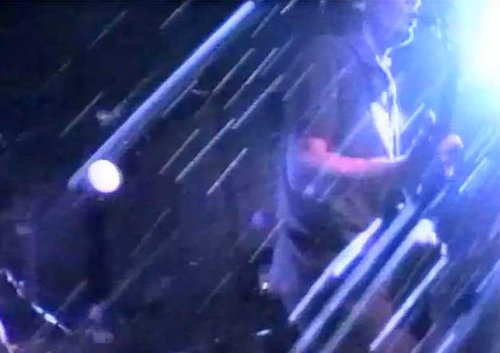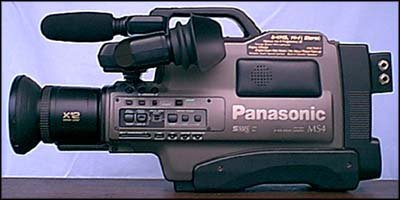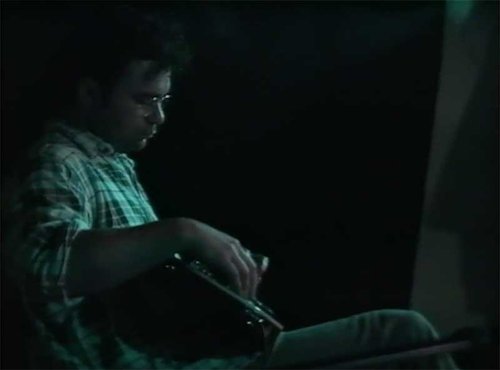
By Diane McAllen
For music historians and documentary filmmakers of the future and the merely nostalgic, live music recordings can be gold – treasured mementos waiting to be revealed to a new audience.
Recently I watched Ron Howard’s Eight Days a Week DVD box-set which includes delicious digitally enhanced live footage of the fab four performing to screaming teenage girls – you know the footage. Imagine if those fans had smartphones in their hands? I began to reflect on some recordings of live music that I have personally deposited into the care of Ngā Taonga Sound & Vision.
During the late 1990s, my then-partner Campbell Walker and I filmed various live gigs, including a project to make a documentary about the work of Peter Jefferies. Peter had been part of legendary underground bands Nocturnal Projections and This Kind of Punishment, before enjoying a substantial solo career, and he was returning to his home-town of Stratford. There is a fantastic interview with Peter on AudioCulture here.
Hero image: Peter Jefferies and Shayne Carter playing onstage - an audience member throws her beer over them and the camera.

Peter Jefferies at the Wild Horse in Palmerston North.
Peter had returned to New Zealand to spend some time with his mother and was touring New Zealand as a one man band. He had developed a technique for drumming and playing the piano at the same time.
We were both keen fans of all of Peter’s work (later naming our first feature length film Uncomfortable Comfortable from one of his song lyrics) and took time out to travel with him on his nationwide tour. Although the documentary project was left uncompleted, over twenty hours of material was filmed.
Recording live music gigs – in my experience – is like filming a ‘fly-on-the-wall’ documentary. The main purpose of the camera is there to record the event. Frustratingly, you will have little control over lighting, sound or even physical movements of the musicians or members of the audience. Being flexible is definitely an advantage.
We had an old Panasonic SVHS camera. Anybody remember those? This was one of those chunky style camcorders that you could easily rest on your shoulder for stability. I used to heavily manipulate the manual zoom and focus rings – I guess that became my “signature style”, a style mostly created to deal with the low light conditions, and my dislike of tripods and automatic settings.

Panasonic MS4 Camcorder (Media College)
One of the highlights of the tour was being there to film the supporting performance by Michael Morley (like Peter, a stalwart of the Xpressway record label and band member of The Dead C) at Gate in Timaru.
There had been some miscommunication and the event had not been publicised, resulting in an audience of one who had seen Peter the night before in Dunedin and followed us up. In the spirit of “the show must go on” the performance continued regardless. In true noise-musician style Morley made good use of the squeaky metal framed chair that he was sitting on to augment the sound-scape, the film thereby capturing a unique musical moment.

Michael Morley at Empire Hotel in Timaru, 1998. (F84829)
For a period I’d often find myself behind the camera filming gigs for friends in the independent music scene. Recording almost anything at the ‘old’ Bar Bodega in Willis Street, Wellington always presented a challenge. Bodega was the back room of an old villa and had one corner of the room dedicated to a small stage. Here, recording a performance by American musician Will Oldham (Bonnie Prince Billy) playing with local alt-country band, The Renderers, proved a challenge.
I was off-stage and there were around six people plus equipment on stage. The room was packed with audience members and it was very difficult to get any sight-lines – everything was close, murky, sticky with sweat and the sound distorted to hell. All this comes through on the audience point-of-view film, capturing an essence of the place, band and time.
At other times, because of the throng of the crowd the best angle was achieved by being snuggled right in on the stage with the band. This was the case with the recording of Roy Montgomery (Dadamah, Pin Group), Peter Jefferies and Bruce Russell (former head of RNZ Sound Archives, Xpressway Records and member of The Dead C) at the old Dux de Lux venue in Christchurch. The sound was usually fairly distorted as you’d be practically sitting on a large speaker. When forced to a position on stage you unconsciously became part of the performance – who was that chick on stage with a camera?
Looking back over the footage, it’s a pity we didn’t get more shots of the crowd, but the low-light conditions would have made that difficult. The sound quality is not great either, because of the challenges with relying on the in-camera microphone. However, there is something unique captured by the rawness of the footage, the thrill of the event and the magic of the on-stage performance.
This clip shows a trippy variation of the Dimmer single Evolution, with Shayne Carter and Peter Jefferies at the legendary Auckland Venue, Luna.